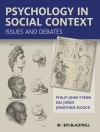This book critically examines the historical and philosophical foundations of construct validity theory (CVT), and how these have and continue to inform and constrain the conceptualization of validity and its application in research. CVT has had an immense impact on how researchers in the behavioural sciences conceptualize and approach their subject matter. Yet, there is equivocation regarding the foundations of the CVT framework as well as ambiguities concerning the nature of the “constructs” that are its raison d’etre. The book is organized in terms of three major parts that speak, respectively, to the historical, philosophical, and pragmatic dimensions of CVT. The primary objective is to provide researchers and students with a critical lens through which a deeper understanding may be gained of both the utility and limitations of CVT and the validation practices to which it has given rise.
表中的内容
1 Introduction.- Part I: The Historical Dimension of Construct Validity.- 2 Historical Precursors and Early Testing Theory.- 3 The Birth of Construct Validity Theory
4 Construct Validity: Developments and Debates.- 5 Recent Accounts of (Construct) Validity.- Part II: The Philosophical Dimension of Construct Validity.- 6 The Philosophical Backdrop of Construct Validity.- 7 Philosophical Sketches of Construct Validity Theory.- 8 Some Conceptual Housecleaning.- Part III: The Pragmatic Dimension of Construct Validity.- 9 Construct Validation: View from the “Trenches”.- 10 Revisiting Possibilities for Construct Validity Theory.
关于作者
Kathleen Slaney is Associate Professor of Psychology at Simon Fraser University, Canada. She is a Fellow of the American Psychological Association, and a co-editor of
A Wittgensteinian Perspective on the Use of Conceptual Analysis in Psychology (2013) and
The Wiley Handbook of Theoretical and Philosophical Psychology (2015).












